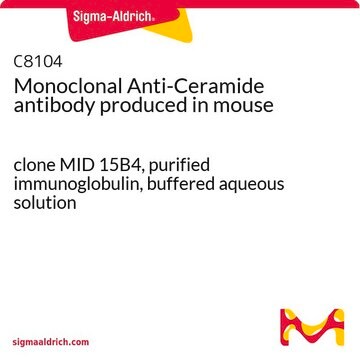MAB8002
Anti-Hepatitis-E-Virus-Antikörper, AS 434–457, Klon 1E6
clone 1E6, Chemicon®, from mouse
Synonym(e):
HEV
About This Item
Empfohlene Produkte
Biologische Quelle
mouse
Qualitätsniveau
Antikörperform
purified immunoglobulin
Antikörper-Produkttyp
primary antibodies
Klon
1E6, monoclonal
Speziesreaktivität
human
Hersteller/Markenname
Chemicon®
Methode(n)
ELISA: suitable
immunofluorescence: suitable
western blot: suitable
Isotyp
IgG2b
Versandbedingung
wet ice
Spezifität
Immunogen
Anwendung
Immunblotting
Immunfluoreszenz
Optimale Verdünnungen müssen vom Endanwender bestimmt werden.
Infektionskrankheiten
Infektionskrankheiten – viral
Physikalische Form
Lagerung und Haltbarkeit
Sonstige Hinweise
Rechtliche Hinweise
Haftungsausschluss
Not finding the right product?
Try our Produkt-Auswahlhilfe.
Lagerklassenschlüssel
10 - Combustible liquids
WGK
WGK 2
Flammpunkt (°F)
Not applicable
Flammpunkt (°C)
Not applicable
Analysenzertifikate (COA)
Suchen Sie nach Analysenzertifikate (COA), indem Sie die Lot-/Chargennummer des Produkts eingeben. Lot- und Chargennummern sind auf dem Produktetikett hinter den Wörtern ‘Lot’ oder ‘Batch’ (Lot oder Charge) zu finden.
Besitzen Sie dieses Produkt bereits?
In der Dokumentenbibliothek finden Sie die Dokumentation zu den Produkten, die Sie kürzlich erworben haben.
Unser Team von Wissenschaftlern verfügt über Erfahrung in allen Forschungsbereichen einschließlich Life Science, Materialwissenschaften, chemischer Synthese, Chromatographie, Analytik und vielen mehr..
Setzen Sie sich mit dem technischen Dienst in Verbindung.




